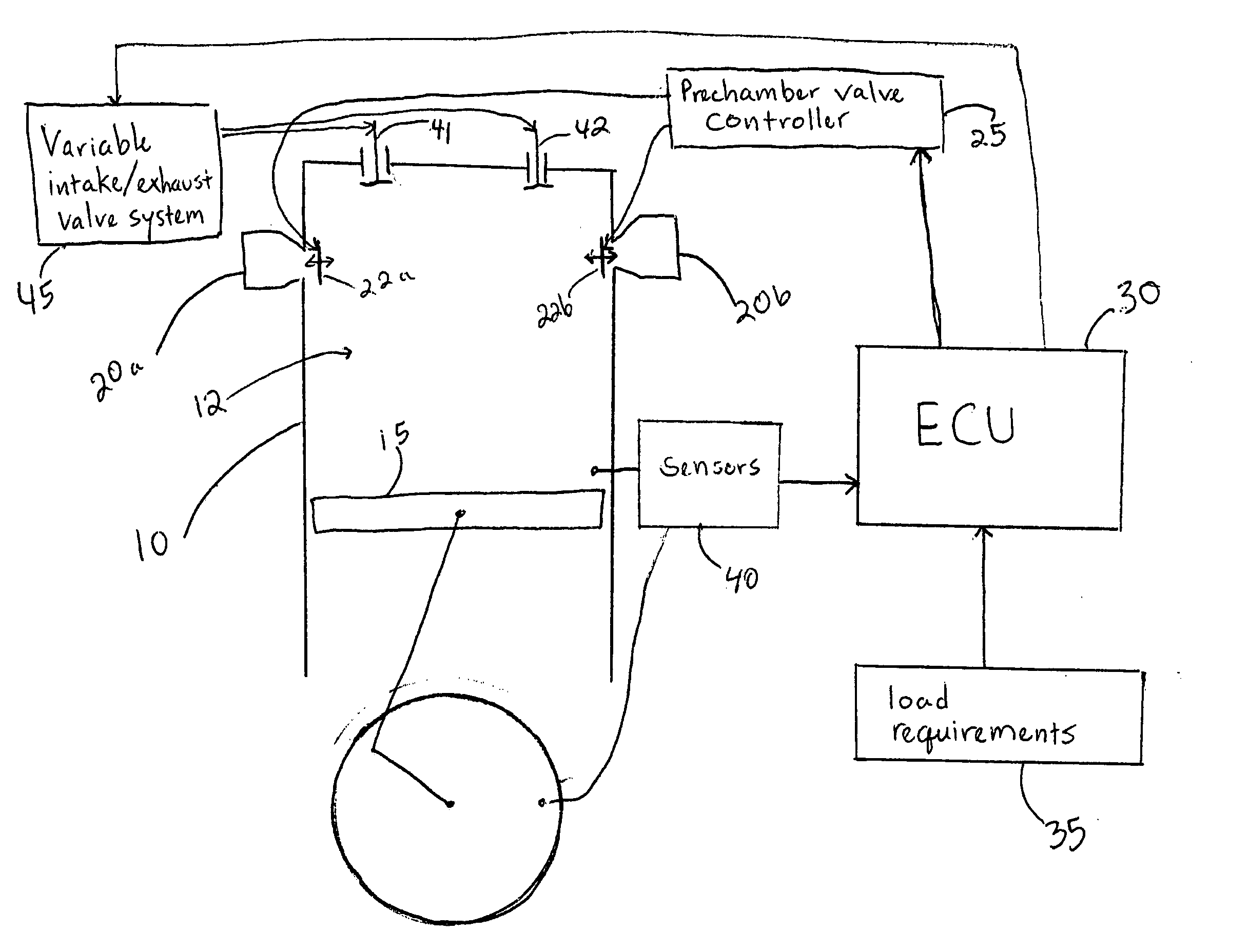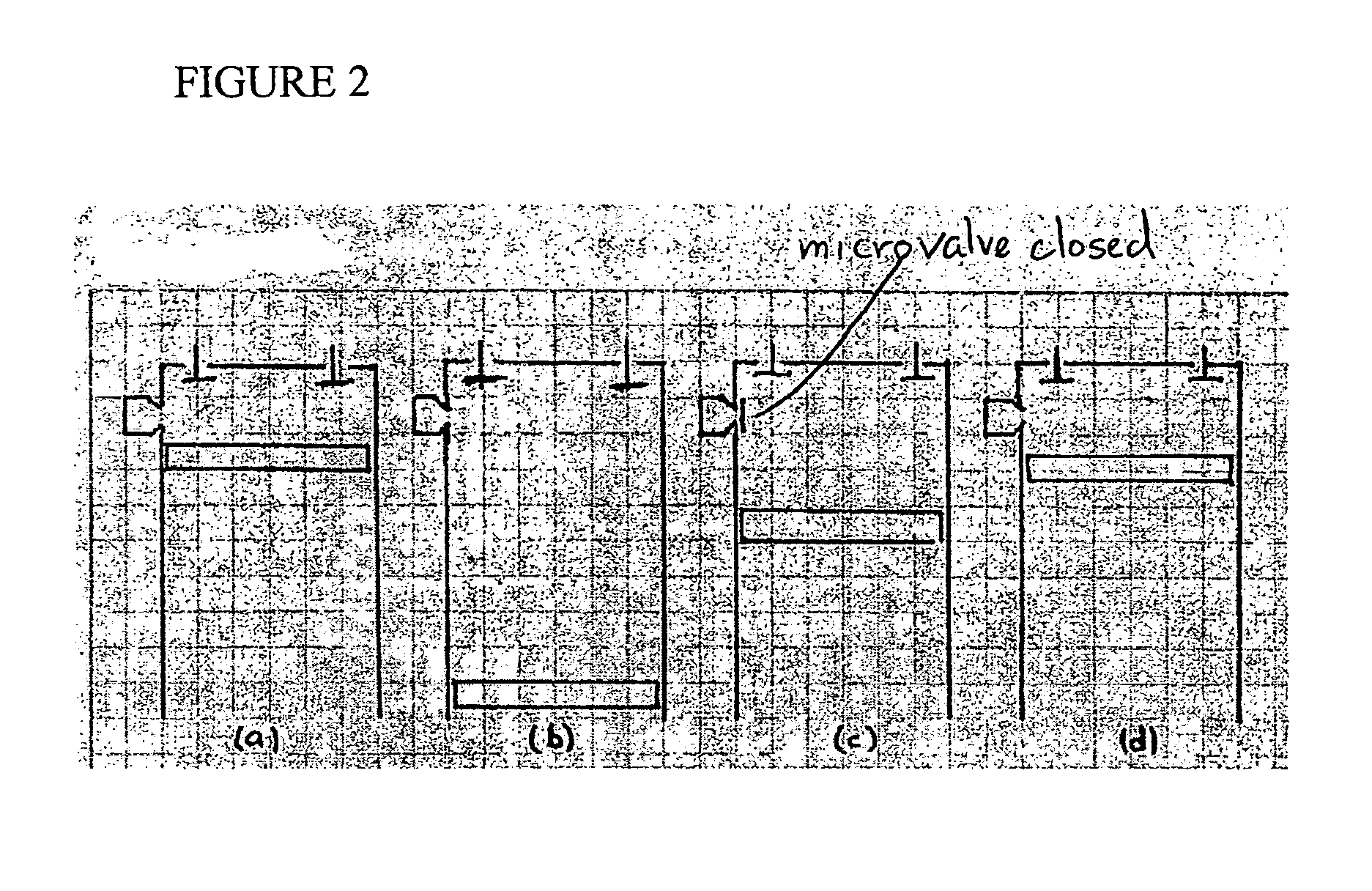Control of auto-ignition timing for homogeneous combustion jet ignition engines
a technology of auto-ignition timing and combustion jet ignition, which is applied in the direction of electric control, machines/engines, mechanical equipment, etc., can solve the problems of reducing engine efficiency, affecting the practical implementation of hcci, and affecting the combustion of internal combustion engines to some degree, so as to eliminate their respective drawbacks
- Summary
- Abstract
- Description
- Claims
- Application Information
AI Technical Summary
Benefits of technology
Problems solved by technology
Method used
Image
Examples
Embodiment Construction
[0017]FIG. 1 shows a schematic diagram of an embodiment of an engine system that can be used in conjunction with the HCJI technique according to the present invention. As shown, an engine cylinder 10 enclosing a charge space 12 and a piston 15 is coupled to one or more prechambers. In the depicted embodiment, two prechambers 20a, 20b are shown, each situated near to the top of the cylinder and extending outwardly from its side surface. Each prechamber 20a, 20b encloses a volume that is smaller than the volume enclosed by the cylinder by two orders of magnitude. The prechambers 20a, 20b are coupled to the cylinder 10 via respective prechamber microvalves 22a, 22b that when closed, completely cut the prechambers off from the cylinders, isolating the prechambers from the cylinder and allowing different ambient conditions (e.g., temperature and pressure) to develop in the prechambers in comparison to the cylinder. While in the depicted embodiment, each prechamber 20a, 20b is coupled to ...
PUM
 Login to View More
Login to View More Abstract
Description
Claims
Application Information
 Login to View More
Login to View More - R&D
- Intellectual Property
- Life Sciences
- Materials
- Tech Scout
- Unparalleled Data Quality
- Higher Quality Content
- 60% Fewer Hallucinations
Browse by: Latest US Patents, China's latest patents, Technical Efficacy Thesaurus, Application Domain, Technology Topic, Popular Technical Reports.
© 2025 PatSnap. All rights reserved.Legal|Privacy policy|Modern Slavery Act Transparency Statement|Sitemap|About US| Contact US: help@patsnap.com



